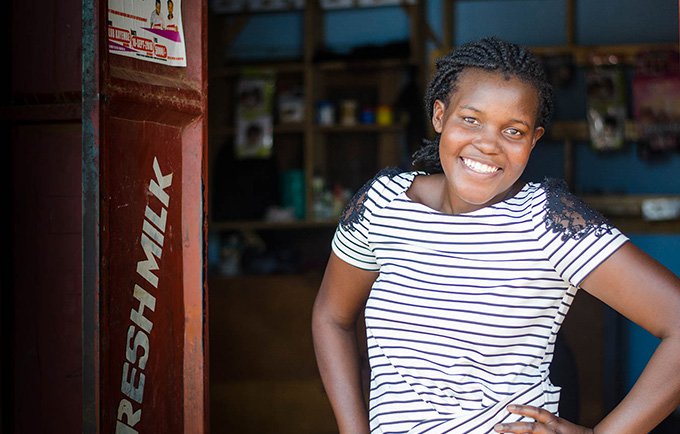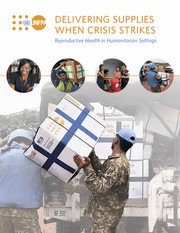What is family planning?
Family planning is the information, means and methods that allow individuals to decide if and when to have children. This includes a wide range of contraceptives – including pills, implants, intrauterine devices, surgical procedures that limit fertility, and barrier methods such as condoms – as well as non-invasive methods such as the calendar method and abstinence. Family planning also includes information about how to become pregnant when it is desirable, as well as treatment of infertility.
UNFPA supports many aspects of voluntary family planning, including procuring contraceptives, training health professionals to accurately and sensitively counsel individuals about their family planning options, and promoting comprehensive sexuality education in schools. UNFPA never promotes abortion as a form of family planning.
Family planning saves lives
Contraceptives prevent unintended pregnancies, reduce the number of abortions, and lower the incidence of death and disability related to complications of pregnancy and childbirth. If all women in developing regions with an unmet need for contraceptives were able to use modern methods, maternal deaths would be reduced by a quarter and child deaths would decrease by as much as one fifth.
Women’s and adolescents’ right to contraceptive information and services is grounded in basic
human rights. The Programme of Action of the International Conference on Population and Development (ICPD) recognized “the right of men and women to be informed and to have access to safe, effective, affordable and acceptable methods of family planning of their choice.” This agreement lays the foundation for much of UNFPA’s work.
Additionally, male and female condoms, when used correctly and consistently, provide dual protection against both unintended pregnancy and sexually transmitted infections (STIs), including HIV.
Increasing access to modern contraception among adolescent girls is a crucial starting point for improving their long-term health. It is also essential for improving maternal and newborn health: Around the world, complications from pregnancy and childbirth the leading killer of adolescent girls (ages 15-19). Their babies also face a higher risk of dying than the babies of older women. Yet adolescents face enormous barriers to accessing reproductive health information and services.
UNFPA works to improve access to reproductive health services, including for marginalized young people. In Malawi, for example, health workers are receiving training on providing sensitive and accurate information and services tailored to adolescents.
Family planning empowers women
Access to contraceptive information is central to achieving gender equality. When women and couples are empowered to plan whether and when to have children, women are better enabled to complete their education; women’s autonomy within their households is increased; and their earning power is improved. This strengthens their economic security and well-being and that of their families.
Cumulatively, these benefits contribute to poverty reduction and development.
Family planning brings economic benefits
There are clear economic benefits to investing in family planning. For every additional dollar that is invested in contraception, the cost of pregnancy-related care will be reduced by $2.20. In terms of socioeconomic benefits, achieving universal access to quality sexual and reproductive health services is estimated to yield returns of $120 for every dollar invested.
Family planning can also help countries realize a ‘demographic dividend’, a boost in economic productivity that occurs when there are growing numbers of people in the workforce and falling numbers of dependents.
Contraceptives provided by UNFPA in 2018 included:-1.1 billion male condoms
-11.6 million female condoms
-66.4 million oral contraceptives (28-day packs)
-3.3 million IUDs
-56.6 million injectables
-8.2 million implans
-1 million emergency contraceptives
UNFPA-supplied contraceptives are estimated to have:
-Averted 30 million unintended pregnancies
-Averted 8.9 milliom unsafe abortions
-Averted 73,500 maternal deaths
Overcoming barriers to family planning
Common reasons why women do not use contraceptives include logistical problems, such as difficulty travelling to health facilities or supplies running out at health clinics. Reasons also include social barriers, such as opposition by partners, families or communities. Lack of knowledge also plays a role, with many women not understanding that they are able to becoming pregnant, not knowing what contraceptive methods are available, or having incorrect perceptions about the health risks of modern methods.
There are a number of challenges to improving access to family planning information and services. Efforts to increase access must be sensitive to cultural and national contexts, and must consider economic, geographic and age disparities within countries.
Poorer women and those in rural areas often have less access to family planning services. Certain groups – including adolescents, unmarried people, the urban poor, rural populations, sex workers and people living with HIV – also face a variety of barriers to family planning. This can lead to higher rates of unintended pregnancy, increased risk of HIV and other STIs, limited choice of contraceptive methods, and higher levels of unmet need for family planning. Particular attention must be paid to promoting their reproductive rights, access to family planning, and other sexual and reproductive health services.
UNFPA’s work
UNFPA works at every level to improve access to family planning and empower individual choices, partnering with governments, NGOs, community-service organizations, faith-based organizations, youth groups and the private sector. With its partners, UNFPA helps to strengthen community-based and youth-friendly reproductive health services, and to provide these services during humanitarian crises.
And through its UNFPA Supplies programme, UNFPA works with partners and governments to ensure access to a reliable supply of contraceptives, condoms, and medicines and equipment for family planning, STI prevention and maternal health services. UNFPA also works to integrate family planning services into primary health care, so that women and girls are able to access information and contraceptives no matter what health facility they visit.
UNFPA is a key partner in the Family Planning 2020 (FP2020) global partnership, which aims to reach an additional 120 million women and girls with contraceptive services in 69 of the poorest countries in the world by 2020. To meet this goal, and achieve the Sustainable Development Goals, UNFPA is focusing on four key areas:
- Investment in adolescents and youth
- Effective and efficient supply chain management
- Sustainable financing to ensure provision of family planning supplies and services
- Quality of care in family planning service
With its current strategic plan, UNFPA aims to achieve three world-changing transformative results: ending maternal deaths, ending unmet need for family planning, and ending gender-based violence and harmful practices. Providing family planning information and services is a critical part of these efforts.
Updated 9 August 2019.










